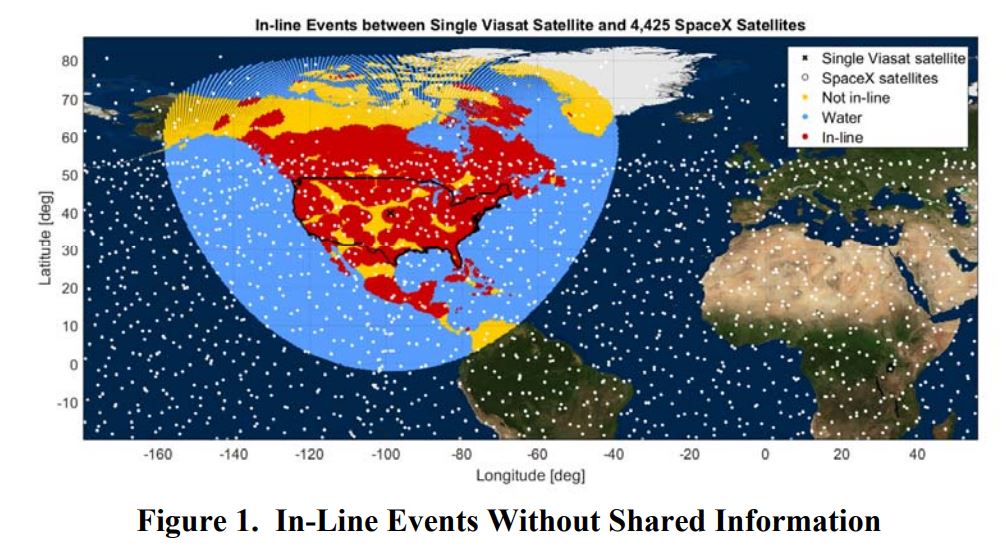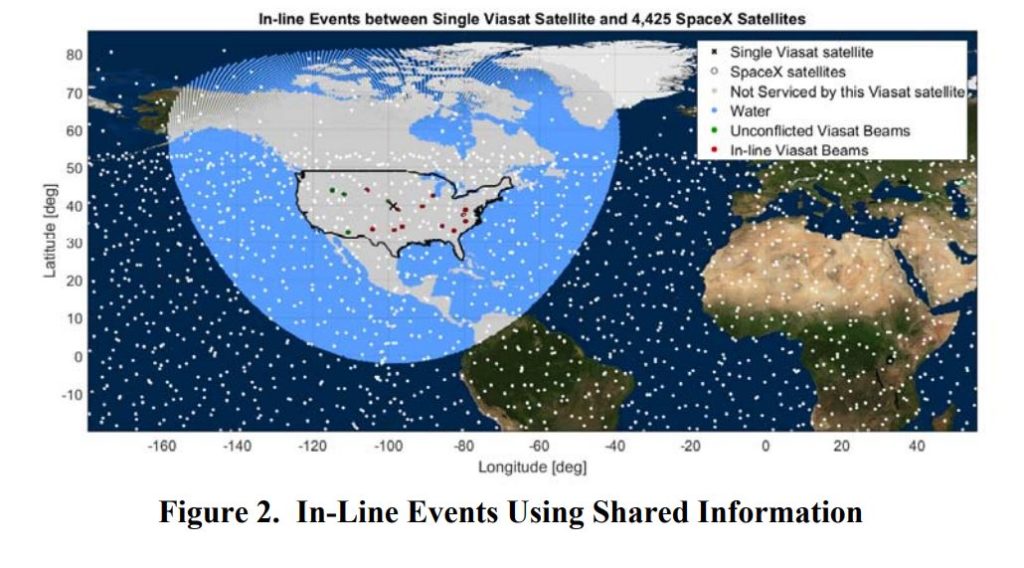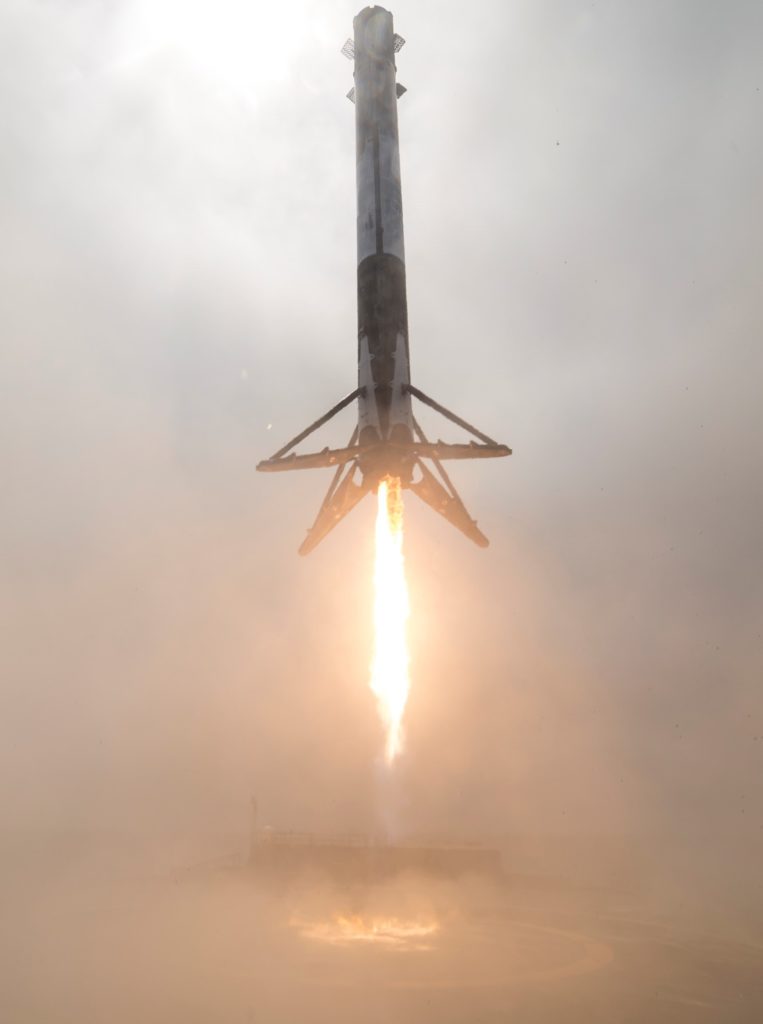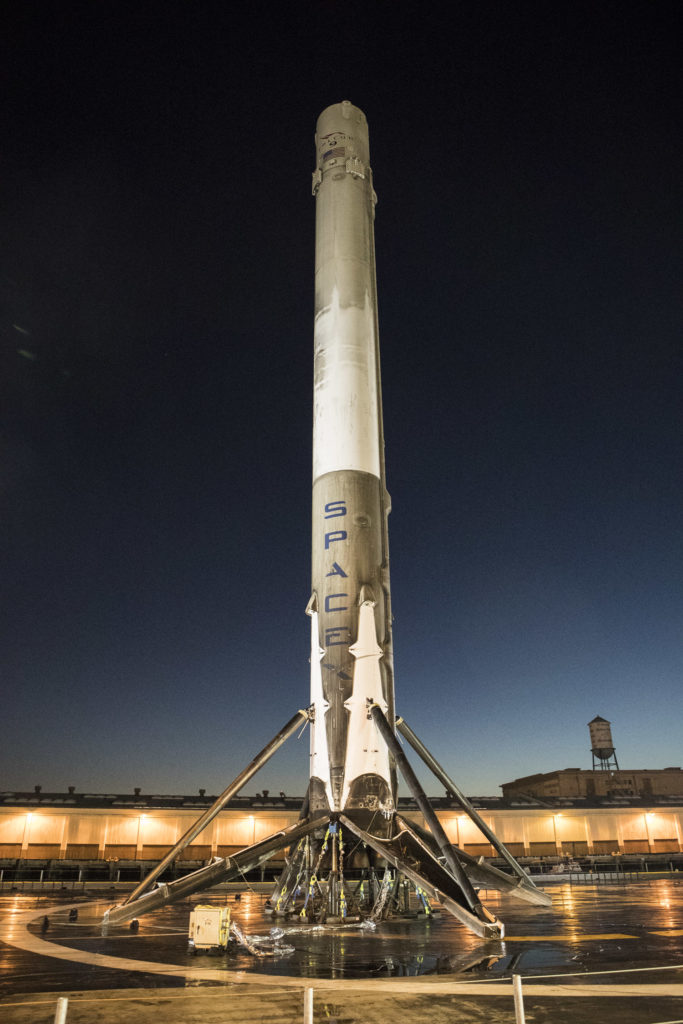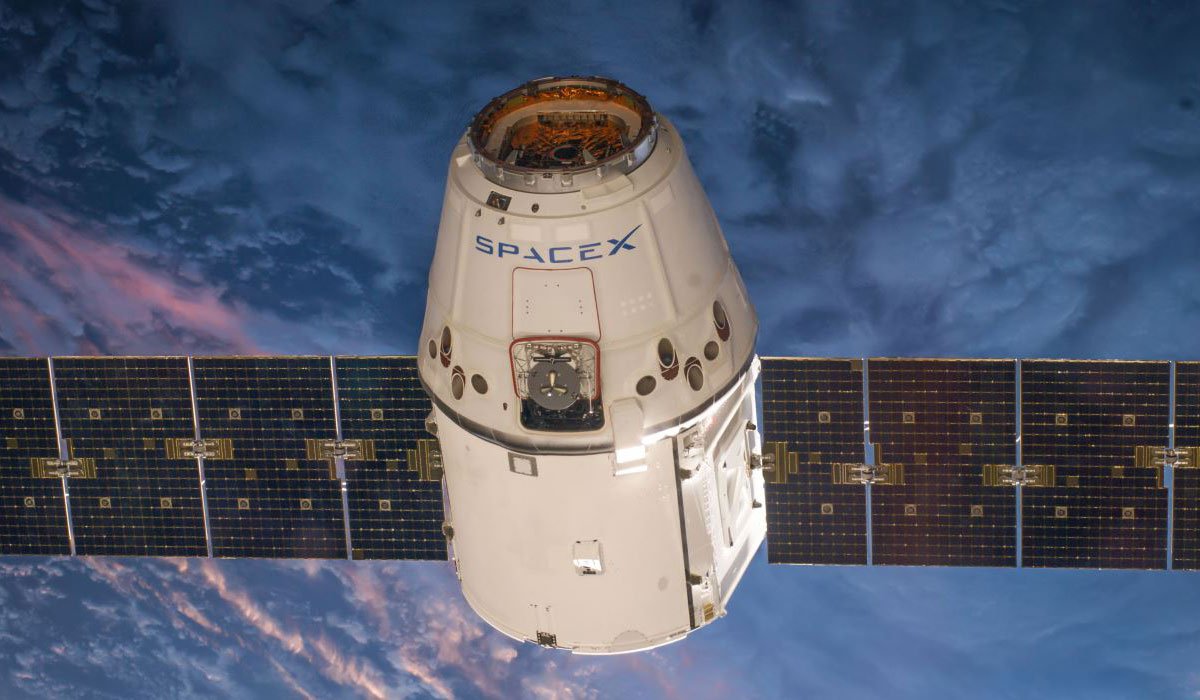

News
SpaceX’s internet satellite strategy faces possible setback (Correction: It’s actually in great shape)
Correction: Upon further analysis of FCC filings and proposed updates to ITU regulations, SpaceX’s Internet constellation is on much steadier ground than it initially appeared to be, and the FCC decision made on September 26 2017 to update its NGSO FSS regulations is likely to help SpaceX far more than it might harm the company.
The ITU has since 2015 taken a stance that aligns more with the FCC’s cooperative spectrum sharing policy and did not intend for Part 5 of its Radio Regulations to be interpreted as a “first come, first serve” attitude. Specifically, the ITU’s 2017 Rules of Procedure pointedly state in Article 9.6 (Word document download) that those rules were not intended “to state an order of priorities for rights to a particular orbital position” and that “the [interference] coordination process is a two way process”. An ex parte filed with the FCC (PDF download) by SpaceX on September 15 stated SpaceX’s support for these international and domestic policy adoptions, as well as the FCC International Bureau’s responsive consideration of SpaceX’s own suggestions.
The company’s first two test satellites could still launch later this year
The U.S. Federal Communications Commission (FCC) responded September 7th to requests for modification to existing satellite communications regulations and FCC practices from a number of prospective constellation operators, including OneWeb, Telesat, and SpaceX.
The FCC ultimately decided to avoid one major rule change that could force SpaceX to completely reconsider its strategic approach to its proposed Low Earth Orbit broadband constellation.
To grossly oversimplify, SpaceX had requested that the FCC apply their non-interference rules for lower orbit communications satellites to internet constellations operating both inside and outside the physical United States. These rules require that communication satellites operating in non-geostationary orbits (NGSO) share the available wireless spectrum equally among themselves when two or more satellites pass within a certain distance of each other relative to ground stations. In simpler terms, consider your smartphone’s cellular connectivity. The FCC’s rule for satellites in lower orbits can be thought of like multiple smartphones using the same cell tower to access the internet: the cell tower simply acknowledges the multiple devices it needs to serve and allows each device a certain amount of bandwidth.
However, the FCC is admittedly a domestic Commission focused on administering communications rules and regulations in the United States, and an agency already exists for coordinating global communications needs, called the International Telecommunication Union (ITU). The ITU’s Radio Regulations are considerably more simplistic. Rather than the FCC’s more nuanced and reasonable methods of spectrum sharing, the ITU allows the first satellite operator actively using a certain orbit or spectrum to become the primary coordinator for all interference issues. Put more simply, it gives those who launch communications satellites first a “first come, first serve” advantage that lets those entities then set the rules for interference with their constellation.
- In these figures, SpaceX attempts to demonstrate the significance of cooperation between different satellite constellation operators. (SpaceX/FCC)
- Compared to the first figure, interference events while sharing data on satellite locations is almost nonexistent. (SpaceX/FCC)
Both OneWeb and Telesat, companies also interested in launching global broadband constellations, are licensed in countries other than the United States, meaning that the FCC has given the ITU precedent in deciding how to deal with SpaceX’s potential constellation interference. SpaceX’s proposed constellation of at least several thousand satellites ends up being at a distinct disadvantage simply because it would take far longer for SpaceX to even partially complete its constellation when compared with competitors like OneWeb, who expect to finish launching the first phase of their constellation several hundred satellites by the end of 2020. Under the ITU’s regulations, SpaceX could be forced by competitors to effectively step on eggshells around their constellations by avoiding interference to the furthest extent possible, rather than simply sharing spectrum in the brief periods where different satellites temporarily interfere with each other.
While the FCC’s choice to cede international interference coordination to the ITU is a huge blow to SpaceX’s proposed internet constellation efforts, the same September 7th report also eased a handful of other requirements that would have proven difficult for SpaceX’s massive constellation. For geostationary constellations, the FCC previously required that all satellites be launched within a period of six years, with failure to do so resulting in a revoked license for the company in question. In a small concession to SES, O3b, and SpaceX, the FCC now plans to require that 50% of lower orbit satellite constellations be launched within six years of receiving an FCC license. This would still be a massive challenge for SpaceX’s plan of 4,425 initial satellites and a follow-up constellation of more than 7,000 additional satellites (PDF download).
- Falcon 9 lands on drone ship JRTI after launching Formosat-5, August 2017. (SpaceX)
- 2017 saw SpaceX recovery 10 Falcon 9 first stages, 5 by sea. (SpaceX)
- Falcon 9 B1040 returns to LZ-1 after the launch of the USAF’s X-37B spaceplane. (SpaceX)
The FCC’s September 7th report will not become final unless it is passed by vote in a September 26th Open Commission Meeting. It is possible that SpaceX council will make a statement protesting the FCC’s decision, but it is nevertheless likely that the FCC’s report will be accepted and become official. While the LEO internet constellation has remained a low priority for SpaceX since it was revealed in 2015, the company has steadily continued work on the project and SpaceX has every reason to continue pursuing it given the potential profit margins it could produce. In spite of the now expanded difficulties lying ahead, SpaceX appears to be preparing for the first launch of two test satellites related to its internet constellation efforts. The move is seen as a likely attempt to tag along as passengers during SpaceX’s launch of PAZ, a Spanish earth imaging satellite, during the final three months of 2017.
Elon Musk is scheduled to reveal more details on SpaceX’s Mars exploration and colonization efforts on September 29th. He has stated that this presentation will focus more on the “how” of colonizing Mars, revealing how exactly SpaceX thinks it can fund the development of its Interplanetary Transport System. Musk also confirmed several weeks ago that SpaceX had reduced the size of the ITS rocket to a still-massive diameter of 9 meters, and sources inside the company have also indicated that the company is thinking about modifying its LC-39A Florida launch pad to support both Falcon and ITS vehicles. SpaceX recruiters revealed earlier this week that SpaceX also intends to have their Boca Chica, Texas launch pad, which is currently under construction, be capable of eventually launching ITS-sized vehicles once it comes online in 2019 or later.
News
Tesla begins Robotaxi certification push in Arizona: report
Tesla seems serious about expanding its Robotaxi service to several states in the coming months.

Tesla has initiated discussions with Arizona transportation regulators to certify its driverless Robotaxi service in the state, as per a recent report from Bloomberg News. The move follows Tesla’s launch of its Robotaxi pilot program in Austin, Texas, as well as CEO Elon Musk’s recent comments about the service’s expansion in the Bay Area.
The Arizona Department of Transportation confirmed to Bloomberg that Tesla has reached out to begin the certification process for autonomous ride-sharing operations in the state. While details remain limited, the outreach suggests that Tesla is serious about expanding its driverless Robotaxi service to several territories in the coming months.
The Arizona development comes as Tesla prepares to expand its service area in Austin this weekend, as per CEO Elon Musk in a post on X. Musk also stated that Tesla is targeting the San Francisco Bay Area as its next major market, with a potential launch “in a month or two,” pending regulatory approvals.
Tesla first launched its autonomous ride-hailing program on June 22 in Austin with a small fleet of Model Y vehicles, accompanied by a Tesla employee in the passenger seat to monitor safety. While still classified as a test, Musk has said the program will expand to about 1,000 vehicles in the coming months. Tesla will later upgrade its Robotaxi fleet with the Cyercab, a two-seater that is designed without a steering wheel.
Sightings of Cybercab castings around the Giga Texas complex suggests that Tesla may be ramping the initial trial production of the self-driving two-seater. Tesla, for its part, has noted in the past that volume production of the Cybercab is expected to start sometime next year.
In California, Tesla has already applied for a transportation charter-party carrier permit from the state’s Public Utilities Commission. The company is reportedly taking a phased approach to operating in California, with the Robotaxi service starting with pre-arranged rides for employees in vehicles with safety drivers.
News
Tesla sets November 6 date for 2025 Annual Shareholder Meeting
The automaker announced the date on Thursday in a Form 8-K.

Tesla has scheduled its 2025 annual shareholder meeting for November 6, addressing investor concerns that the company was nearing a legal deadline to hold the event.
The automaker announced the date on Thursday in a Form 8-K submitted to the United States Securities and Exchange Commission (SEC). The company also listed a new proposal submission deadline of July 31 for items to be included in the proxy statement.
Tesla’s announcement followed calls from a group of 27 shareholders, including the leaders of large public pension funds, which urged Tesla’s board to formally set the meeting date, as noted in a report from The Wall Street Journal.
The group noted that under Texas law, where Tesla is now incorporated, companies must hold annual meetings within 13 months of the last one if requested by shareholders. Tesla’s previous annual shareholder meeting was held on June 13, 2024, which placed the July 13 deadline in focus.
Tesla originally stated in its 2024 annual report that it would file its proxy statement by the end of April. However, an amended filing on April 30 indicated that the Board of Directors had not yet finalized a meeting date, at least at the time.
The April filing also confirmed that Tesla’s board had formed a special committee to evaluate certain matters related to CEO Elon Musk’s compensation plan. Musk’s CEO performance award remains at the center of a lengthy legal dispute in Delaware, Tesla’s former state of incorporation.
Due to the aftermath of Musk’s legal dispute about his compensation plan in Delaware, he has not been paid for his work at Tesla for several years. Musk, for his part, has noted that he is more concerned about his voting stake in Tesla than his actual salary.
At last year’s annual meeting, TSLA shareholders voted to reapprove Elon Musk’s compensation plan and ratified Tesla’s decision to relocate its legal domicile from Delaware to Texas.
Elon Musk
Grok coming to Tesla vehicles next week “at the latest:” Elon Musk
Grok’s rollout to Tesla vehicles is expected to begin next week at the latest.

Elon Musk announced on Thursday that Grok, the large language model developed by his startup xAI, will soon be available in Tesla vehicles. Grok’s rollout to Tesla vehicles is expected to begin next week at the latest, further deepening the ties between the two Elon Musk-led companies.
Tesla–xAI synergy
Musk confirmed the news on X shortly after livestreaming the release of Grok 4, xAI’s latest large language model. “Grok is coming to Tesla vehicles very soon. Next week at the latest,” Musk wrote in a post on social media platform X.
During the livestream, Musk and several members of the xAI team highlighted several upgrades to Grok 4’s voice capabilities and performance metrics, positioning the LLM as competitive with top-tier models from OpenAI and Google.
The in-vehicle integration of Grok marks a new chapter in Tesla’s AI development. While Tesla has long relied on in-house systems for autonomous driving and energy optimization, Grok’s integration would introduce conversational AI directly into its vehicles’ user experience. This integration could potentially improve customer interaction inside Tesla vehicles.
xAI and Tesla’s collaborative footprint
Grok’s upcoming rollout to Tesla vehicles adds to a growing business relationship between Tesla and xAI. Earlier this year, Tesla disclosed that it generated $198.3 million in revenue from commercial, consulting, and support agreements with xAI, as noted in a report from Bloomberg News. A large portion of that amount, however, came from the sale of Megapack energy storage systems to the artificial intelligence startup.
In July 2023, Musk polled X users about whether Tesla should invest $5 billion in xAI. While no formal investment has been made so far, 68% of poll participants voted yes, and Musk has since stated that the idea would be discussed with Tesla’s board.
-

 Elon Musk1 week ago
Elon Musk1 week agoTesla investors will be shocked by Jim Cramer’s latest assessment
-

 Elon Musk3 days ago
Elon Musk3 days agoElon Musk confirms Grok 4 launch on July 9 with livestream event
-

 Elon Musk18 hours ago
Elon Musk18 hours agoxAI launches Grok 4 with new $300/month SuperGrok Heavy subscription
-

 News7 days ago
News7 days agoTesla Model 3 ranks as the safest new car in Europe for 2025, per Euro NCAP tests
-

 Elon Musk2 weeks ago
Elon Musk2 weeks agoA Tesla just delivered itself to a customer autonomously, Elon Musk confirms
-

 Elon Musk1 week ago
Elon Musk1 week agoxAI’s Memphis data center receives air permit despite community criticism
-

 Elon Musk2 weeks ago
Elon Musk2 weeks agoTesla’s Omead Afshar, known as Elon Musk’s right-hand man, leaves company: reports
-

 News2 weeks ago
News2 weeks agoXiaomi CEO congratulates Tesla on first FSD delivery: “We have to continue learning!”

